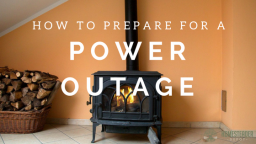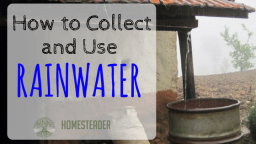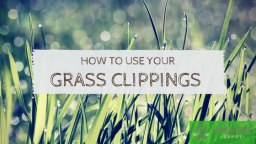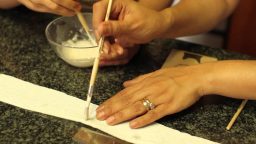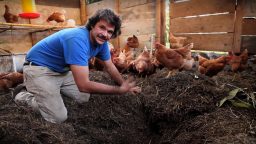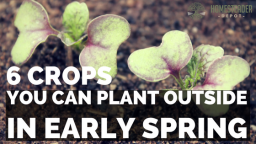I keep saying “spring is right around the corner” so forgive me, I’m just excited to get gardening again! As I prepare my own spring garden by starting seeds indoors, I have also been planning to start a few crops outdoors.
I really prefer direct sowing for many reasons, while starting seeds indoors will give you that leg up to start your spring garden, and is great in many ways, direct sowing is easier, of course, and a lot of plants prefer not to be transplanted. I think it’s a really good idea to try both this year, especially if you’re a relatively new gardener, to get a feel for what’s easiest for you and which plants tolerate transplanting in your climate, and which do not.
If you’d like to try some direct sowing this year and are eager to get started, as I certainly am, here are some crops you can start indoors while it’s still cold out.
Radishes
Radishes are a great crop to grow for so many reasons, and among those reasons is that you can start them early in the spring! They are cold tolerant and grow quickly, so you’ll be harvesting fresh, delicious radishes before you know it.
You can direct sow radishes according to the seed packet instructions between 4 and 6 weeks before the last frost in your region. Make sure to choose an area with full sun, and to thin them a week or so after they’ve sprouted.
You can also sow continuously, meaning, two weeks after your first planting, you can direct sow more seeds in your radish patch, and every two weeks for the next six weeks, to have a longer, continuous harvest.
Lettuce
Lettuce is another cold tolerant plant that you’ll probably be happy to harvest as soon as you can. What better reason to garden then to have fresh salads throughout the spring and summer, right?
Since the delicate leaves of lettuce are still vulnerable to frost, you will probably want to plant these under cold frames if you anticipate more frost or snow in your area. If temperatures in your cold frame are between 45 and 65 degrees, you can direct sow lettuce in well-tilled soil.
If temperatures in your cold frame are between 45 and 65 degrees, you can direct sow lettuce in well-tilled soil (this is important). Plant either rows or broadcast your seeds in a patch, cover lightly with a very thin layer of soil, and then thin out according to the seed packet once the seedlings are over 3″ tall.
You can sow lettuce continuously as well, if you’d like a steady harvest through the spring and summer.
Carrots
Carrots are not ideal for transplanting, so you’ll definitely want to direct sow them. Fortunately, they can tolerate some cold, so they’re a great choice for an early spring garden.
Like lettuce, these also need very well-tilled soil, as the roots will need plenty of room to expand for nice, big carrots. Make sure to remove any rocks, too.
Direct sow according to the packet instruction, leaving the recommended space around them (again, carrots need plenty of room!) around 4 weeks before the last frost in your region.
Thin your carrot seedlings back when they’re about 1″ tall, and fertilize with well-composted compost about 5 weeks after they sprout.
Beets
I don’t know about you but I’m starting to get hungry thinking about all these delicious vegetables (did I mention I’m eager to start my garden?). Beets are both delicious and can be planted early in the year.
While beets need a soil temperature of at least 50 degrees to germinate, in a cold frame, they can surive both frost and temps as low as 32 degrees, so they’re ideal to put in that cold frame along with your lettuce if you have thawed-out soil.
Plant them according to the packet instructions, and thin when they’re at least 4″ tall. However, when you thin back, just clip off the tops of the seedlings you’d like to remove, otherwise, you risk disturbing those you plan to let grow.
Make sure they get plenty of water as they’re growing, beets are very thirsty plants. Keep them mulched as well; this will not only retain moisture, it will keep the soil warm in the cold months.
You can continiously plant your beets as well, every two weeks until temperatures regularly exceed 70 degrees.
Cabbage
Cabbage is not only cold tolerant, it actually prefers it! This is an excellent option for an early garden, because not only will it grow, but you might miss your chance to grow cabbage if you wait too long!
You can plant cabbage as soon as the soil is warm enough to use, or 4 weeks before the last frost.
Kale
Kale is another plant that, like cabbage, actually prefers the cold. It is commonly said that kale actually tastes better if it’s been through a frost! I’m not sure why this is, but many gardeners agree.
Plant kale according to the packet instructions as soon as your soil is warm enough, and mist regularly. These take a bit longer to germinate, so just make sure to keep your soil consistently moist in this time. Once the seedlings are about 4″ tall, thin back using trimmers.
One great thing about kale is that if you start harvesting the outer leaves, the plant will keep growing, and actually be far less bitter. It’s amazing how long a well-tended kale plant will last, so this is yet another reason why kale is an excellent option for an early spring garden.
Well, I don’t know about you, but I can’t wait to get out there and get my hands dirty. Plant some of these crops today and you’ll be enjoying a bounty in a few months! Happy gardening.
If you enjoyed this, you might also like….
